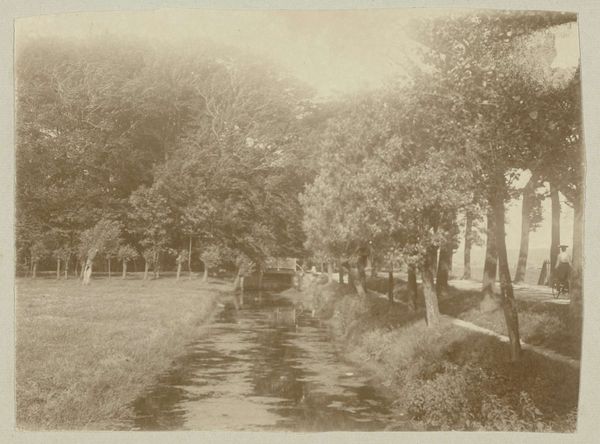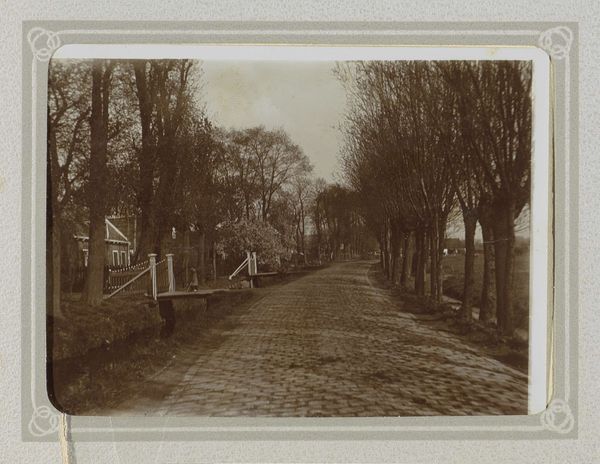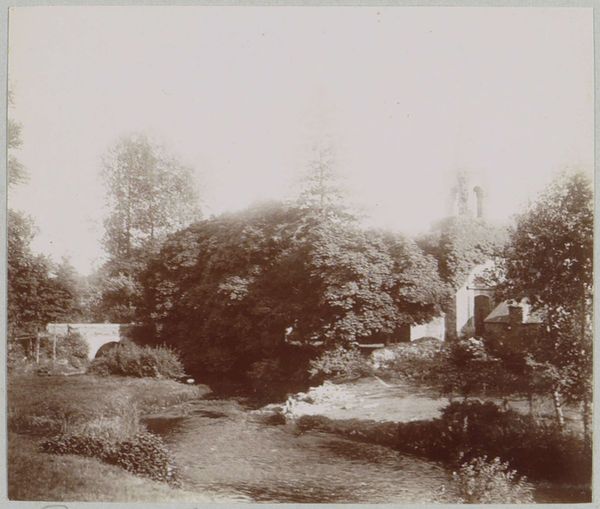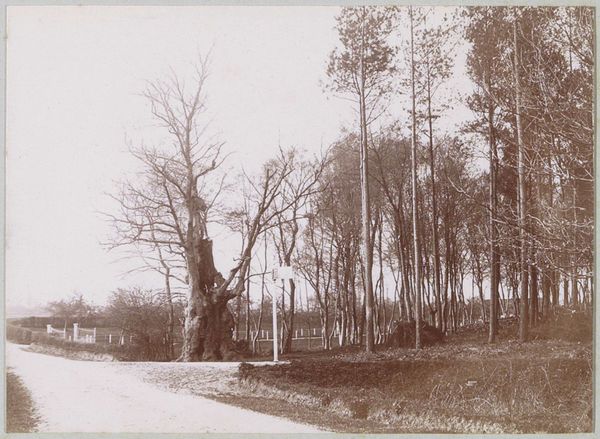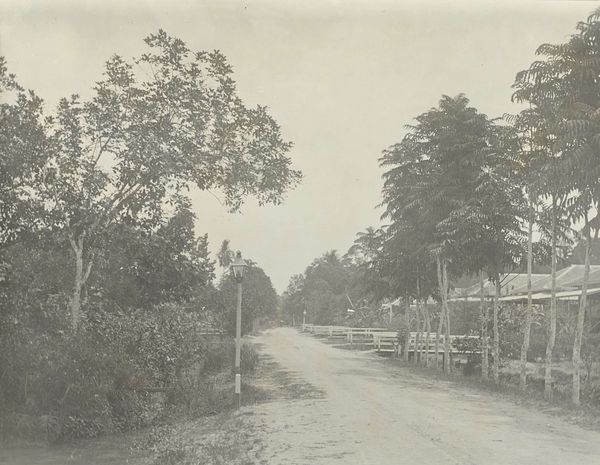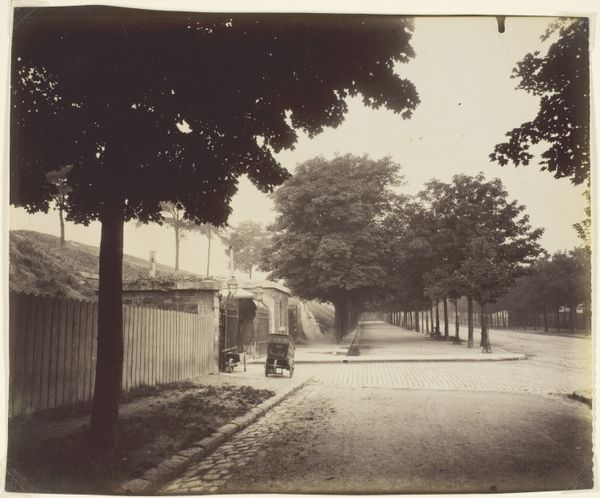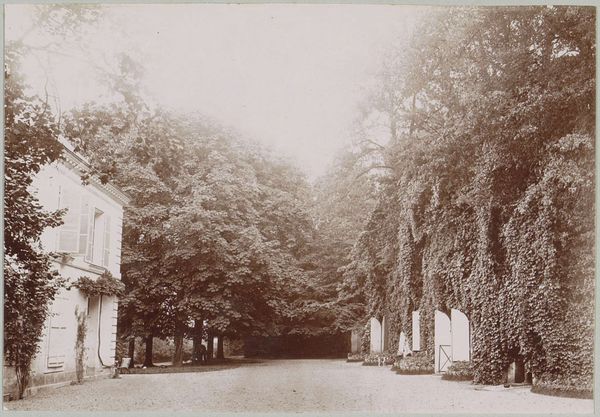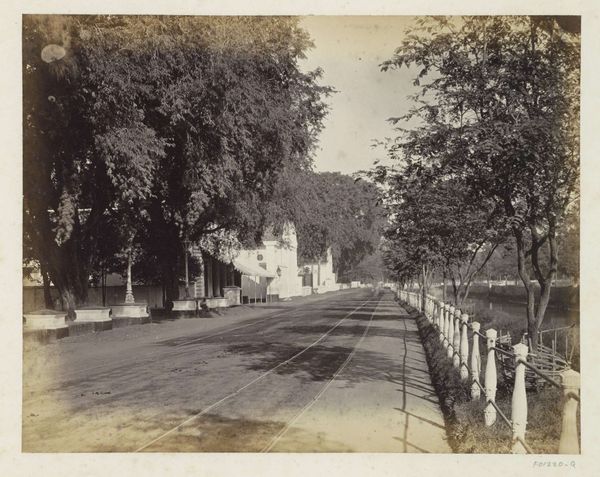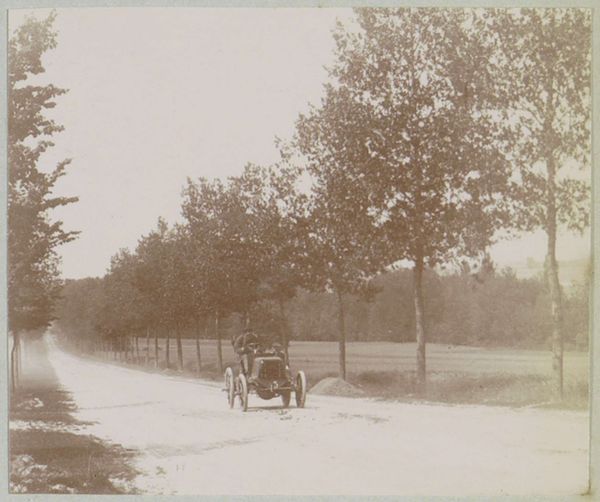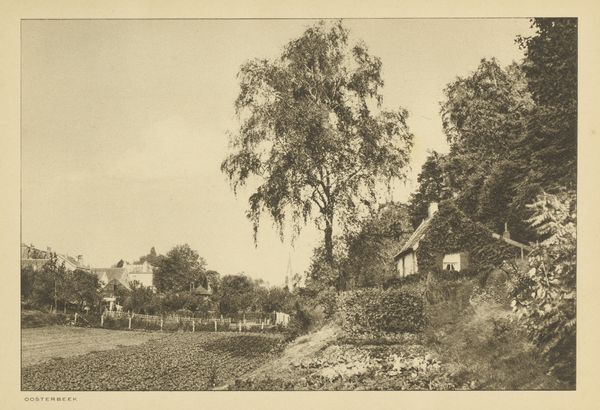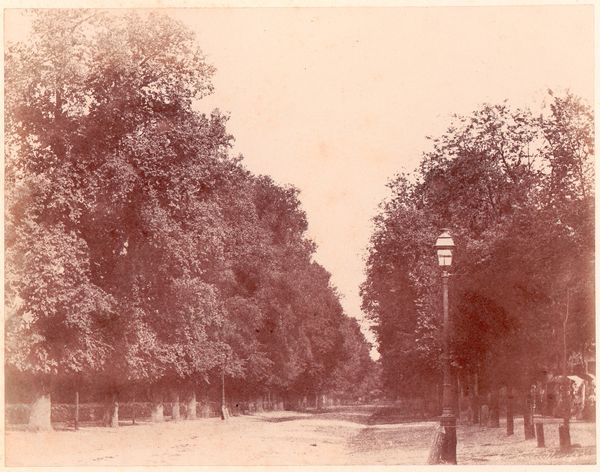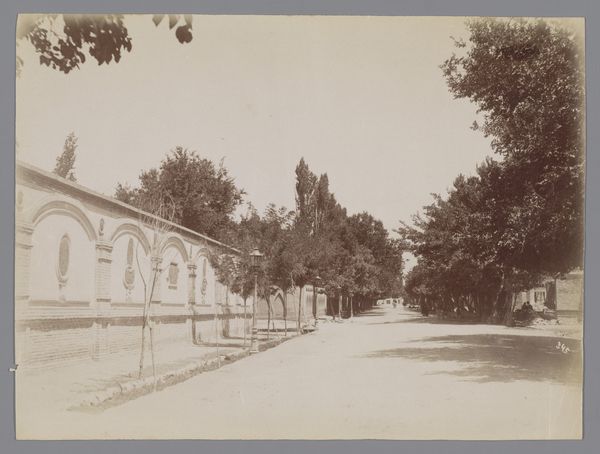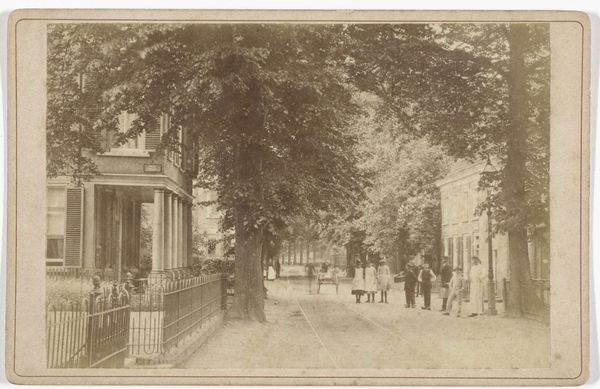
Copyright: Public Domain
Curator: This is George Shadbolt's "The Time of Promise," a gelatin silver print created in 1857. It's an early example of pictorialist photography currently residing at the Metropolitan Museum of Art. What strikes you initially? Editor: The scene feels incredibly peaceful, almost melancholic. The way the light filters through the trees, the soft focus…it evokes a sense of quiet expectation. I can see why it's titled as a "time of promise," I can easily project this moment as just before sunrise. Curator: Absolutely. Shadbolt, positioned himself within the complex debates around photography's legitimacy as art. Was it merely a mechanical reproduction, or could it be manipulated to express an artistic vision? Here, the softness is deliberate, pushing back against the sharp, documentary style that dominated early photography. It begs us to ask who has historically been afforded the privilege to conceptualize and capture landscapes, and to consider the gaze and narrative they bring to it. Editor: Right, it is about more than just aesthetics. The trees, especially, stand out as prominent visual symbols. They represent growth, potential, but also the cyclical nature of life. I also cannot help but consider the gate as a signifier in this view: barrier or entrance? Curator: That fence in the right side of the shot raises interesting questions about property and boundaries. It introduces a subtle tension within the seemingly idyllic scene, maybe something around the rise of enclosures within society. It's important to contextualize this piece within the social and political landscape of mid-19th-century Britain, where rapid industrialization and urbanization were transforming the relationship between people and the land. Who was free to wander, and who was kept out? Editor: It almost feels like a stage setting. Shadbolt clearly invites the viewer to become part of it and perhaps reflect about memory, belonging and passage. Curator: Well said. It really showcases the dynamism inherent within artistic interpretation. The convergence of history, symbolism and lived experiences creates ever-evolving relationships to art and society. Editor: Exactly. Analyzing the past enriches how we interpret the present, it's fascinating how much a simple landscape can offer such deep reflection.
Comments
No comments
Be the first to comment and join the conversation on the ultimate creative platform.
